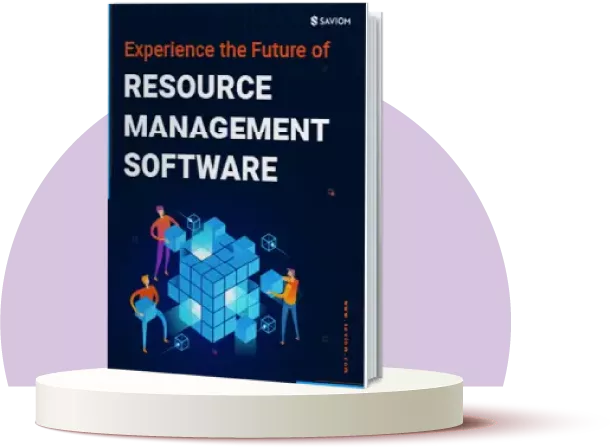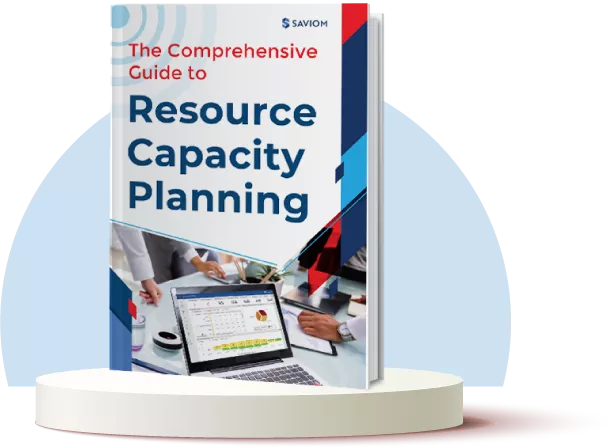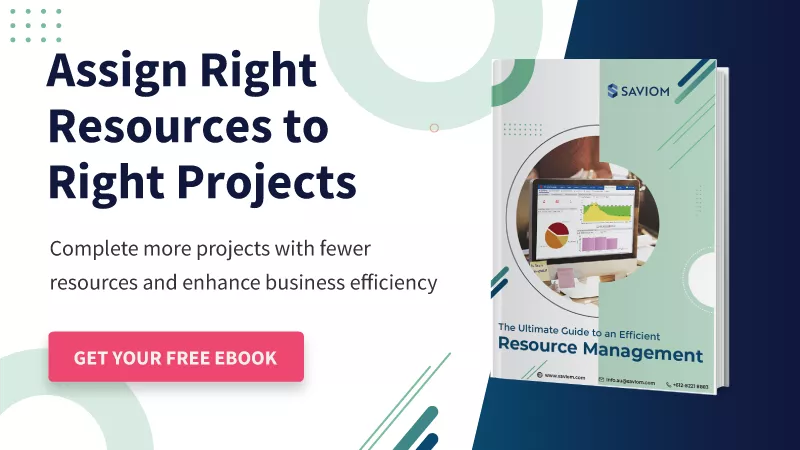Imagine you work at a PR agency whose success typically hinges on delivering exceptional campaigns and maintaining strong client relationships. However, there are a lot of issues going on in the backdrop. Key positions in client relations and creative teams frequently experience churn, and employee engagement scores are at an all-time low. Moreover, team members struggle to work productively and meet client expectations, resulting in revenue loss for the company.
The root of these issues? Ineffective talent management.
When organizations have a proper talent management framework in place, they can acquire and retain top performers, improve workforce productivity, produce high-quality deliverables, and achieve better profit margins. It allows them to align their recruitment and employee development processes with overall business goals. More importantly, it will enable organizations to build and maintain a conducive work environment that drives employees’ engagement, growth, and satisfaction.
In this blog, we will delve into the key concepts of talent management and how it helps drive organizational efficiency and success.
What is Talent Management?
Talent management is the process of attracting, developing, and retaining high-performing employees to meet the organization’s immediate and long-term goals. It goes beyond mere hiring by focusing on the continuous growth and engagement of the workforce.
The talent management process includes various components such as recruitment, onboarding, compensation & benefits, performance management, employee engagement, succession planning, and career development. In essence, talent management is about creating a work environment where employees can thrive and contribute to the organization’s long-term success.
Now that you’re aware of the definition, let’s move towards the components.
Read More: The Benefits of Talent Management: How to Transform Your Business Potential?
Key Components of Talent Management
The talent management process includes various components that enhance the entire employee lifecycle.
Let’s have a look at them.
Talent Planning
Talent planning is the step-by-step process of evaluating the organization’s staffing needs and taking concrete measures to fulfill them. It starts with identifying pipeline opportunities, analyzing internal capabilities, and evaluating existing skill gaps. This thorough assessment allows talent managers to develop the workforce’s competencies and make them future ready.
Talent Acquisition
Talent acquisition is the process of identifying and securing the best candidates for your organization. This involves crafting compelling job descriptions, utilizing diverse recruitment channels, and creating an organized hiring process. Moreover, effective talent acquisition fills current roles and builds a robust talent pipeline, preparing the organization for long-term success.
Read More: Talent Acquisition vs. Talent Management: 7 Crucial Differences to Know
Onboarding & Orientation
A survey states that a strong onboarding process improves new hire retention by 82% and productivity by 70%.
Onboarding and orientation are critical business processes that enable the seamless assimilation of new employees into the organization. It helps them understand the company culture, team dynamics, and their roles, responsibilities, and performance goals. Thus, a structured onboarding and orientation process provides new hires with critical tools and knowledge that help them succeed in the workplace.
Performance Management
As per Deloitte Insights, “Companies that are among the best at talent management are six times more likely to address performance issues.”
Performance management is an ongoing process aimed at enhancing employee effectiveness. It involves setting clear expectations, providing constructive feedback, and aligning individual goals with organizational objectives. Regular performance reviews help identify strengths and areas for improvement for the employees, and this helps boost personal and business growth.
Read More: What is Employee Performance Management and Why It is Important?
Compensation & Benefits
A competitive salary structure and a well-rounded benefits package can help attract and retain top talent and enhance job satisfaction and loyalty. Further, regularly reviewing and adjusting compensation based on performance and market standards ensures it remains fair and competitive, reflecting the value employees bring to the organization.
Career Development
Career development opportunities focus on helping employees achieve their professional aspirations and diversify their competencies. It enables organizations to build a highly skilled workforce capable of undertaking advanced projects and capturing new market opportunities. Moreover, it helps maximize productivity, support employees in their career journeys, and boost business efficiency.
Read More: Importance of Skill Development in Making Your Workforce Future-Ready
Employee Engagement & Retention
Employee engagement and retention are critical components that help companies to maintain a productive work environment. Engaged employees significantly contribute to organizational goals and are more likely to stay long-term. In addition , retaining high performers allows firms to reduce unnecessary recruitment costs, maintain optimal productivity, and ensure stable operations.
Succession Planning
A report by Kaplan suggests, “The third most common reason (72%) for implementing a TMP is to foster business growth by developing new leaders.”
Succession planning ensures your organization is prepared for future leadership transitions. It helps identify and develop high-potential employees for critical and leadership roles within the company. This process helps ensure smooth role transitions and minimizes disruptions, keeping the organization running efficiently during the sudden exit of critical resources.
Let’s take a look at the various benefits of talent management –
5 Key Benefits of Talent Management
Talent management is a success driver for firms as it boosts the firm’s growth by maximizing the potential of employees .
Enlisted below are the key advantages of a proper talent management process.
Reduces Unnecessary Recruitment Costs
Talent management reduces costly hiring/firing cycles by developing a competent internal resource pool. It promotes upskilling and multi-skill building, which minimizes the need for multiple hires and lowers recruitment costs. In case external hiring is unavoidable, managers can source cost-effective global professionals to minimize resourcing costs. Additionally, hiring culturally fit candidates reduces turnover rates, saving costs on future recruitment and training.
Helps Build a Robust Talent Pipeline
A talent management process helps organizations create effective succession plans. This strategy allows managers to identify and train suitable candidates for critical roles, facilitating upward mobility and career progression. As a result, it enables companies to bridge skill gaps, fill leadership roles, preserve institutional knowledge, and build a robust talent pipeline.
Enhances Employee Engagement Levels
When talent management is done right, employee engagement improves substantially. It helps align individual competencies and expertise with overall business needs and provides ample growth opportunities. This makes employees motivated and improves their job satisfaction. As a result, retention rates increase, and the organization benefits from a stable, dedicated workforce.
Read More: 11 Effective Strategies to Enhance Employee Engagement
Promotes Learning and Development of the Workforce
According to Pew Research, “47% of employees say their extra training helped them advance within their current company.”
Talent management is crucial in fostering a culture of continuous learning and development within an organization. Identifying skill gaps and providing tailored learning opportunities helps employees build new skills and advance their careers . This approach empowers employees to perform better in their current roles and prepares them for future opportunities within the company.
Lowers Employee Turnover Rates
Effective talent management reduces employee turnover by creating a work environment where employees feel valued, engaged, and aligned with the company’s mission. It also focuses on employee development by providing competitive compensation and clear career progression paths. As a result, when employees see that their growth is prioritized, they are less likely to seek opportunities elsewhere.Having understood the benefits, let’s move towards the key talent management strategies.
Read More: Ten Effective Strategies to Reduce Employee Turnover
8 Effective Talent Management Strategies
Implementing robust talent management strategies enables firms to optimize their workforce, align employee skills with business goals, and foster a culture of continuous improvement.
Below mentioned are the strategies that can help firms create an effective management framework:
Assess the Internal Talent Pool & Identify Gaps
Conducting a thorough evaluation of your workforce is essential to understand their skills and expertise. Talent managers should align this assessment with organizational goals to identify any gaps. This process highlights gaps in technical skills, leadership capabilities, or other vital competencies critical to business success. By doing so, firms can ensure they have the right talent to effectively meet future challenges and objectives.
Let’s say your company plans to expand its digital marketing efforts to boost online visibility and engagement. Begin by conducting a thorough evaluation of your current workforce to assess their skills in areas such as SEO, content creation, and data analytics. This will help you understand where their strengths lie and where there are gaps and ensure the right resources are available for the project.
Formulate a Talent Plan to Bridge the Skill Gaps
After identifying the gaps, developing a talent management plan is crucial to help bridge skill gaps. This should outline targeted strategies for training, development, mentorship, or recruitment of talent to address deficiencies. For example, a technology firm identifies a gap in advanced data analytics skills for an AI project.
For this, the plan might include specialized training programs in data science, partnerships with educational institutions for advanced courses, and targeted recruitment efforts to attract top talent with the required expertise. This approach ensures that the organization can effectively close skill gaps and strengthen its capabilities in critical areas, improving project outcomes.
Facilitate a Seamless Onboarding Experience
According to Zippia, “Strong onboarding programs can increase new hire retention by 82% and productivity by 70%.”
The onboarding process is the first significant interaction new employees have with the organization, and it sets the tone for their entire experience. Therefore, designing an onboarding process that integrates new hires smoothly into your organization is important. This involves preparing detailed orientation programs, providing necessary training, and introducing new employees to their teams and company culture.
Further, a well-structured onboarding experience helps new hires understand their roles and expectations clearly, which leads to faster productivity. For example, assigning a mentor to each new hire can be highly effective. This mentor acts as a go-to person, offering support and helping the new hire understand their responsibilities while facilitating a smooth integration into the team.
Read More: Why an Effective Onboarding Process is Essential for Employee Satisfaction?
Define & Track Critical Employee Metrics
Talent managers must establish and monitor key performance metrics as this helps them make informed decisions and optimize talent management strategies. For this, a talent manager might track KPIs such as time-to-hire, employee retention rates, employee engagement scores, etc. By analyzing these metrics, the manager can identify areas for improvement.
For example, talent managers should consider tracking employee engagement scores. If they notice a dip, they can dive deeper to find out the root causes and provide additional training, role adjustments, or make some changes in management practices. This proactive approach leads to higher employee satisfaction and reduces turnover.
Establish a Proper Reward & Recognition System
As per Great Place to Work, “More personal recognition would motivate 37% of employees to do better work more often.”
Organizations must prioritize rewarding and recognizing employees who exhibit outstanding performance. These rewards can be in various forms, including verbal praise, public recognition, awards, bonuses, PTOs, and promotions. Acknowledging employees’ efforts boosts job satisfaction, loyalty, and productivity, which in turn enhances retention rates.
For example, in a construction company, the senior executives could publicly recognize an architect who delivered an exceptional design that significantly enhanced a project’s aesthetic and functional value. By awarding a bonus or other forms of recognition, the company can reward the architect for their outstanding contribution and inspire others to strive for excellence in their work.
Read More: Employee Recognition Programs: Types, Benefits and Best Practices
Create a Succession Plan for High Potential Employees
As per a Deloitte survey, “86% of leaders believe succession planning is an “urgent” or “important” priority .”
Succession plans ensure smooth operations and business continuity in case of unexpected departure of senior or critical staff. To develop a strong succession plan, talent managers should first identify high-potential employees capable of stepping into leadership positions.
For example, talent managers can assess employees’ performance and leadership qualities during periodic reviews and spot high-performing resources. They can then offer targeted upskilling programs, including on-the-job training and shadowing opportunities, to equip them with the necessary skills for future roles and minimize workflow disruptions.
Develop a Holistic Company Culture
As per Gallup, “Companies with highly engaged employees are 23% more profitable and 18% more productive.”
To improve employee engagement, it’s very crucial to create a positive work culture. Managers can take proactive steps to achieve this by promoting diversity and inclusion, which helps ensure that employees feel valued and respected, leading to increased morale. They can also provide equal gender pay to demonstrate fairness and commitment to equity, increasing employee trust and satisfaction.
Additionally, talent managers can offer flexible work hours that support work-life balance, reducing stress and improving productivity. E ncouraging open communication among employees and actively listening to their grievances is another way to create a holistic company culture, ultimately driving higher engagement levels.
Implement an Advanced Talent Management Solution
Implementing a robust talent management tool can greatly streamline every stage of the employee lifecycle. It provides a 360-degree view of your workforce, offering detailed insights into each employee’s skills and competencies. This allows managers to identify skill gaps easily, plan targeted development initiatives, and align talent with the organization’s strategic goals.
The tool also streamlines the recruitment process from start to end by significantly reducing time-to-hire and improving the candidate’s experience. It further automates routine tasks that minimize administrative burdens and gives talent managers more time for strategic work. The tool also offers real-time reports, improving decision-making processes and thus driving business efficiency.
Read More: Talent Management Software – How to Choose the Best One for Your Business?
Wrapping Up
In today’s diverse business landscape, effective talent management is essential for gaining a competitive edge and driving business growth. By implementing the strategies mentioned above, firms can reduce turnover, boost engagement, and build a strong talent pool, leading to improved project outcomes and increased profitability.
So, are you ready to attract and retain top talent while boosting your firm’s business output?
The Glossary
Read More: Glossary of Resource Workforce Planning, Scheduling and Management
The SAVIOM Solution
SAVIOM is undoubtedly the market leader in offering the most powerful and configurable Enterprise Resource Management Solution. Having more than 20 years of experience, this Australian-based MNC has a global presence in over 50 countries. It is also popular with more than 100 customers and helps them to achieve their business goals. SAVIOM also has products for project portfolio management, professional service automation, and workforce planning software, which can be easily customized per business requirements.










